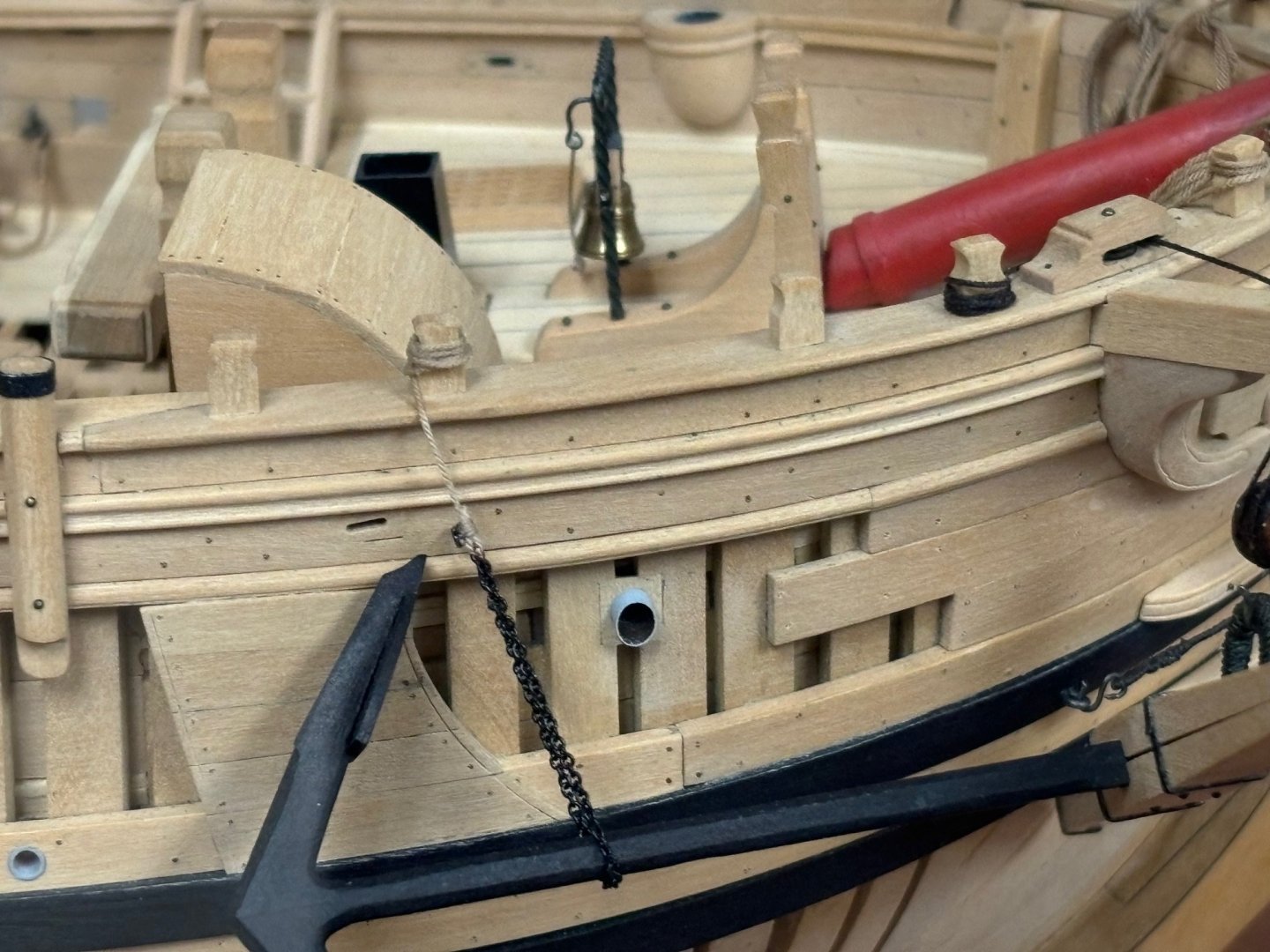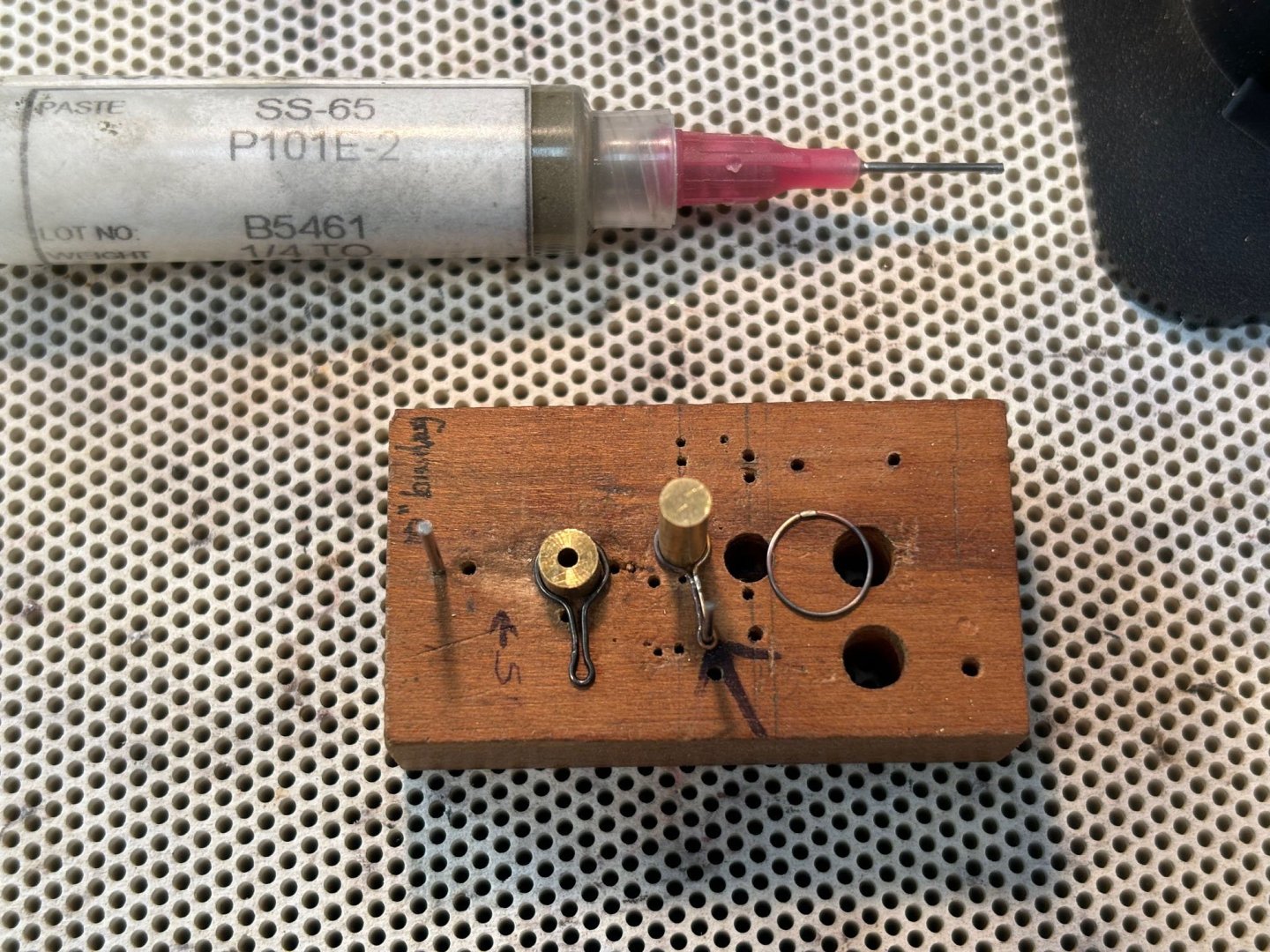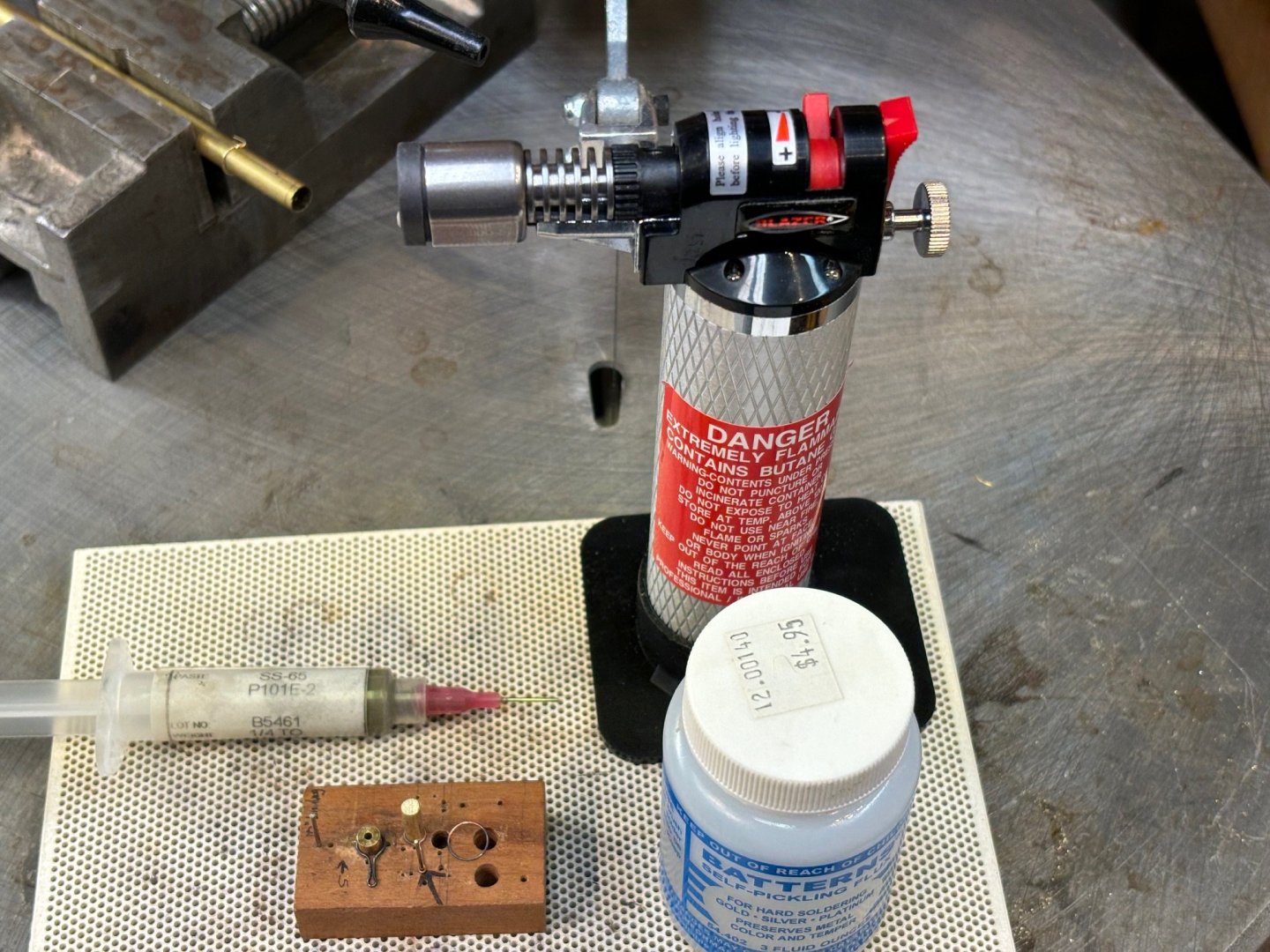-
Posts
2,454 -
Joined
-
Last visited
Content Type
Profiles
Forums
Gallery
Events
Everything posted by dvm27
-
One strategy you might consider is making the stem joint first but leaving it slightly oversized over the mating surface with the apron. Once happy with your scarph joint overlay the apron on it and trace out the curve. This way you don't need to deal with the complexities of cutting and fitting the scarph joint over the apron. Also, if you are in this for the long term, consider purchasing an oscillating spindle sander and buy the finer grit sleeves. I can't tell you how much my accuracy improved following the purchase on mine twenty years ago.
- 92 replies
-
A first model you can be very proud of Matt!
- 69 replies
-
- Lowell Grand Banks Dory
- Model Shipways
-
(and 2 more)
Tagged with:
-
I completely forgot I included them on my model Chuck. At any rate some research shows that the pissdales were made of lead, copper or occasionally wood. There was a lead small discharge tube directly under the pissdale. This 1.4" tube would exit through a small scupper in the waterway. My discharge tubes are comically large. They should only be about twice the diameter of a treenail. The pissdale discharge scupper holes on my model would be more appropriate for a herd of horses. They were discontinued after 1765. I'm going to have to fix that now damn you!
-
Lovely and understated work Chuck. Nothing screams out "look at me" but the entire effect is extraordinary. I look forward to your take on those troublesome pissdales! I didn't add a relief hole in the external hull and I don't believe the original did either. But otherwise why not just pee directly on the deck?
-
Very nice workmanship on this exceedingly difficult area of the model to build.
- 92 replies
-

British Pathe film: Model Boat Building, 1956.
dvm27 replied to uss frolick's topic in Nautical/Naval History
I've seen this a couple times over the years and have come to the conclusion that he is clearly a bachelor! -
Sometimes the rubber cement leaves a residue on my wood. I may be using a different brand than Druxey. Lately I have been using those white glue sticks that young kids use. It goes on purple and dries clear in a few seconds. It also peels off cleanly. I love the spindle sander for curves but I found that using a higher grit makes a cleaner and more accurate cut without causing the divits the 80-120 grit paper can cause.
- 92 replies
-

Frayed lines
dvm27 replied to Dindsy's topic in Building, Framing, Planking and plating a ships hull and deck
I'm afraid you're in a world of hurt Dindsy. I would treat one of the lift lines with a 50% white glue/water solution and see what it looks like after it dries. But I'm not optimistic. Being a cross-section, re-rigging it should not take much time at all and I would use the opportunity to upgrade the blocks and rigging line to Syren Models products. Your second effort will look far better and you'll be much happier in the long term. Now, take a scissors and cut the main shrouds across the middle and you're committed to ship modelling excellence! -
Well, practice does indeed make perfect. It's super important to make sure the ends of the futtocks are the same width and flat over their mating surface with no gaps between them. If you have a Byrnes disk sander this is easy. If not you'll need to get good with a super sharp chisel. I wouldn't use the printed pattern to make the chock as the joint may vary slightly from the pattern. My process is to glue the two futtocks together on top of the pattern and allow to dry. Then place an index card under the joint and trace out the actual chock shape using a mechanical clutch pencil sharpened to a super fine point. Don't worry about the inboard shape for now. Now transfer the card pattern to the properly oriented wood and cut out. The chock should now fit snugly into the joint. Then you can glue it in place. Finally, after dry, trim the inboard face. If you are planning to build several wooden models in the future I can't stress enough how much the Byrnes disk sander (or Proxxon) will improve your work. It's an investment that pays off in accuracy and time saved over the years. Staetler Mars Technical pencil 2mm (780) and Sharpener (502)
-
I wouldn't sweat it. Nobody's going to notice 1/16" after the model is completed. As for raising them all at once or after completed there's really no right or wrong. On a full hull I usually install them in sections to get a feel if they are aligned more or less. Any minor inconsistencies can sometimes be cheated by adjusting the next frame. But on this cross section there is so little change in the half-breadth that it's probably not a factor.
-
Great repair Jean-Mark! One of the things I learned on my first plank on frame model was that my skills would improve dramatically as the build progressed. It is important not to "settle" for anything less than perfect early in the build or you will surely regret it later on. I also found that using 3X magnification loupes while working (regrettably 5-7x now 🙁) greatly improved the finished result. If you are happy with the work at 3x magnification you will surely be happy with the naked eye.
-
I struggled with silver soldering for some time until I found a system that works for me virtually every time. First off, the mini torch I was using did not generate enough heat for silver soldering. I have since had excellent success with the Blazer Torch https://www.amazon.com/dp/B017Z8KD3S?psc=1&ref=ppx_pop_dt_b_product_details. More importantly I switched to silver solder paste from Euro Tools. It comes as soft, medium and hard so you can solder adjacent pieces. Otherwise I use the medium https://beaducation.com/products/silver-solder-paste-medium. I also use Battens Flux on the joint prior to soldering but I'm not sure if you need it with the paste. You only need a speck of the solder on the joint and you have to move the torch the second it flashes. At any rate if you're having unsuccessful solder joints more than 10% of the time maybe give this a try. Also, as Druxey has pointed out, it's best to place the joint on a linear plane.
- 2,696 replies
-
- heller
- soleil royal
-
(and 9 more)
Tagged with:
-
I use 6-32 threaded rod and 6/32 Acorn nut or knurled knob. The rod comes in 12" lengths so it can be trimmed to a custom size. I thread the acorn nut onto one end. You will drill two hoes in the building board that correspond with the holes in the keel. make them slightly larger than the keel holes to allow for adjustments on the building board. Do not tap these holes. Now insert the threaded rods with the acorn nut on the end through a washer, then building board and thread into the keel. continue until the acorn nut snugs against the washer. Mark the exit of the threaded rod where atop the heel and cut flush. I don't glue mine into place as it us helpful to remove the hull sometimes (especially when fairing). I do glue the acorn nut onto the threaded rod once the final position of the threaded rod is determined (using Loctite).
-
Instead of using fillers to repair the errant scores make a small patch using the same wood to fill in the defect. Make sure that the grain matches the direction of the carling (don't use end grain). Once glued in place and sanded flush the defect should be barely perceptible. I have corrected several errant mortises this way.
About us
Modelshipworld - Advancing Ship Modeling through Research
SSL Secured
Your security is important for us so this Website is SSL-Secured
NRG Mailing Address
Nautical Research Guild
237 South Lincoln Street
Westmont IL, 60559-1917
Model Ship World ® and the MSW logo are Registered Trademarks, and belong to the Nautical Research Guild (United States Patent and Trademark Office: No. 6,929,264 & No. 6,929,274, registered Dec. 20, 2022)
Helpful Links
About the NRG
If you enjoy building ship models that are historically accurate as well as beautiful, then The Nautical Research Guild (NRG) is just right for you.
The Guild is a non-profit educational organization whose mission is to “Advance Ship Modeling Through Research”. We provide support to our members in their efforts to raise the quality of their model ships.
The Nautical Research Guild has published our world-renowned quarterly magazine, The Nautical Research Journal, since 1955. The pages of the Journal are full of articles by accomplished ship modelers who show you how they create those exquisite details on their models, and by maritime historians who show you the correct details to build. The Journal is available in both print and digital editions. Go to the NRG web site (www.thenrg.org) to download a complimentary digital copy of the Journal. The NRG also publishes plan sets, books and compilations of back issues of the Journal and the former Ships in Scale and Model Ship Builder magazines.









